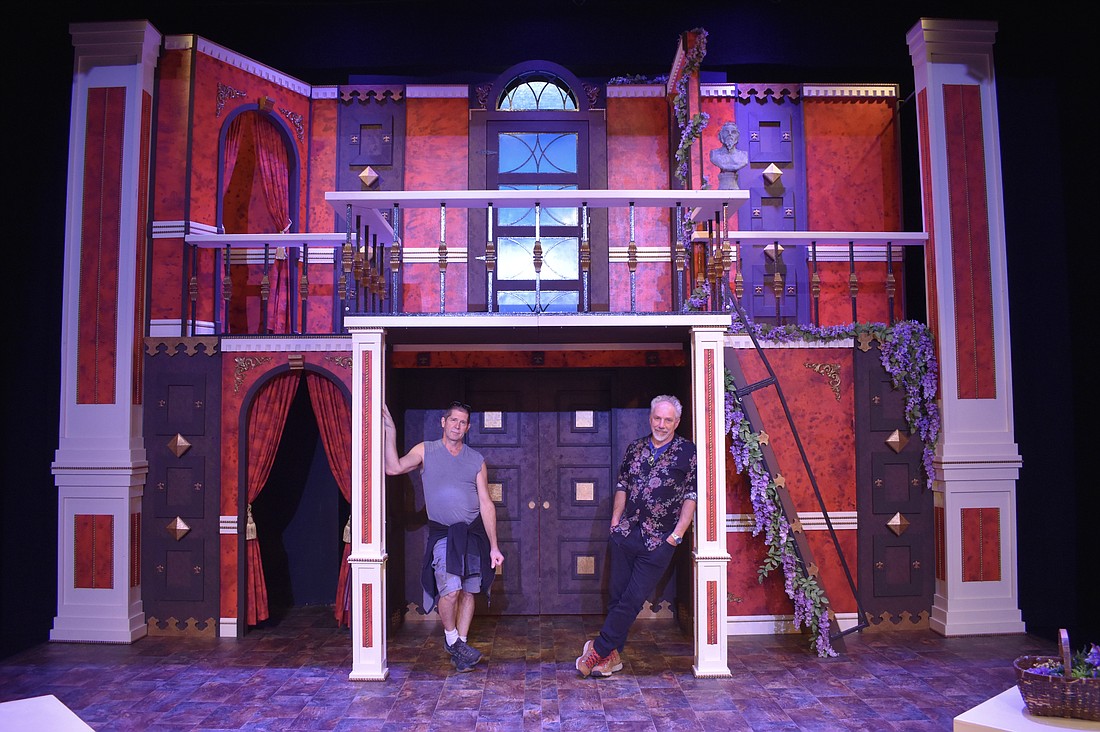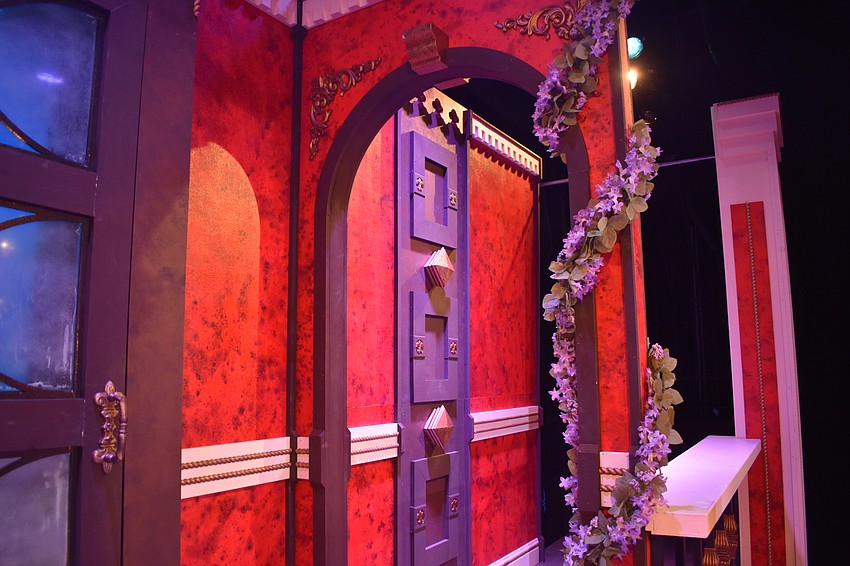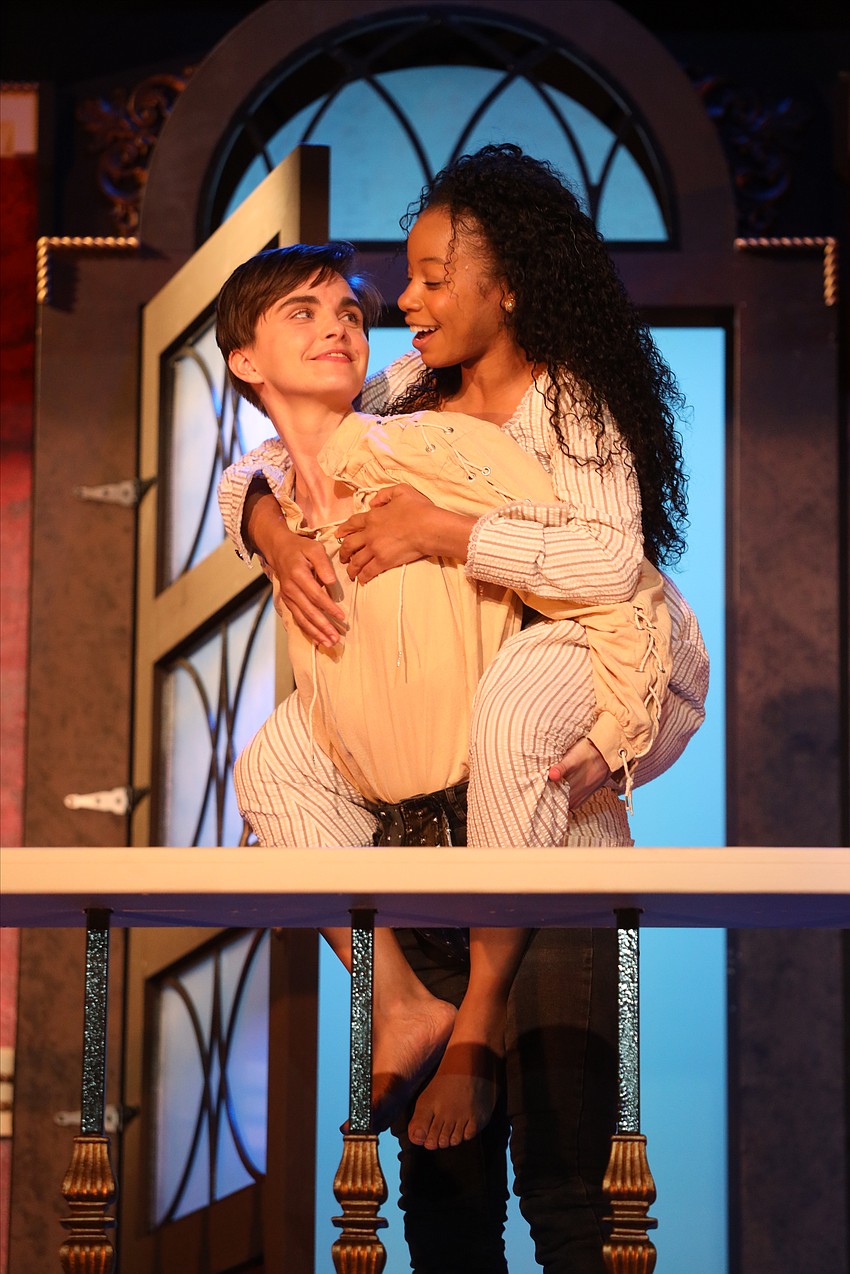- April 29, 2024
-
-
Loading

Loading

In Shakespeare’s England, audiences who attended the theater included the rich and poor alike.
Those with the cheapest admission would stand on the lower level for the duration of the play, while others enjoyed seats, including those in the more comfortable upper levels.
Likewise, the comedy in Shakespeare's plays could be crude, but it could also be sophisticated, appealing to a broad range of tastes.
With so many viewers stacked vertically atop one another, it was only fitting that the stage would consist of multiple levels, giving everyone a view of the action, according to Jonathan Epstein, director of the currently running "Romeo and Juliet" production by Florida State University/Asolo Conservatory for Actor Training.
Epstein believes audiences will see the difference that comes with the new Elizabethan era-style set funded by the Charles & Margery Barancik Foundation.
It exemplifies how Shakespeare's plays were written to be performed, said Epstein, who brings 25 years of experience as an actor, director and teacher with Shakespeare & Co. in Lenox, Massachusetts.
That isn't to say that everything about the new "Romeo and Juliet," starring Caitlin Rose as Romeo and Ashley McCauley Moore as Juliet, remains unchanged from the world of Shakespeare's England.
While women never acted onstage during Shakespeare's lifetime, the play uses cross-gender casting, including the role of Romeo, but the set still transports the audience back in time.
Transporting the audience to Elizabethan England required a little creative license.
In Shakespeare's time, Epstein said, theaters were built without a proper architectural plan, with the only surviving drawing of a theater interior being one of the Swan Theatre.
“We know what the outsides looked like, but we don’t really have an exact idea of what the insides looked like,” he said.
In fact, according to Epstein, the lack of planning was responsible for a flaw in the design of Shakespeare's original stage at The Rose, which had its 13 sides assembled asymmetrically.

Nonetheless, the set features some well-known components from Shakespeare's time, including an "above," or a balcony area with its own entrance, as well as a "below," or the space underneath the balcony.
Another feature Epstein calls Elizabethan is the stage's ornate decorations, a design choice made by technical director Chris McVicker, who chose to implement columns and other elements.
Although creating an exact replica of the setup of an Elizabethan theater, like the Globe Theatre, would require the seats to encircle the stage, Epstein plans to seek funding for additional seats next year.
Indeed, the stage isn't going anywhere, as it can be taken down, stored, reinstalled, adapted and moved. For instance, in other productions that do not involve the current play's sword fighting, it could be brought even closer to the audience.
The small nature of the theatre still means swords will be swinging 5 feet from the closest audience members in "Romeo and Juliet."
That spatial relationship creates a more intimate experience between the actors and the audience, according to Epstein.
Describing the role of an actor, he said, "It's as if rather than my talking to them, it's almost as if I'm getting the thought from them, and that different way of thinking about it creates a different experience for the audience. They feel much more included."
At the same time, the audience has the chance to experience the character's point of view, like when it comes to the iconic moment of Romeo standing beneath the balcony.

“You're having the experience that Romeo has, which is looking up at a young woman who's talking about being in love," he said.
He believes he has found something special in the current troupe of actors, including the leads Rose and Moore.
“This particular group is extraordinarily strong, so that's really nice for me, because I can ask them to do things I wouldn't normally be able to ask student actors to do, even elite student actors. I have really, I think, the nicest Romeo and Juliet pair I’ve ever seen. They have wonderful chemistry with each other.”
Not only does Rose make herself look like a 15-year-old boy, but she also conveys the emotion of her role, as does the rest of the cast, he said.
“They're able to be having a laughing moment, and then a weeping moment very fast, faster than I could, and so that means that the youthful volatility of the characters really comes through,” he said.
This version of "Romeo and Juliet" doesn't shy away from the less romantic sides of the play, such as its violence. Epstein cautions parents against bringing young children due to the intensity of some scenes, like scenes of domestic violence involving Juliet and her parents.
At other times, the material can even be silly.
During the play's first fight scene, for instance, the nurse emerges onto the balcony, a bomb in hand, ready to drop it down below.
“It’s mostly period but every so often, it's nice to have something that isn't period,” he said.